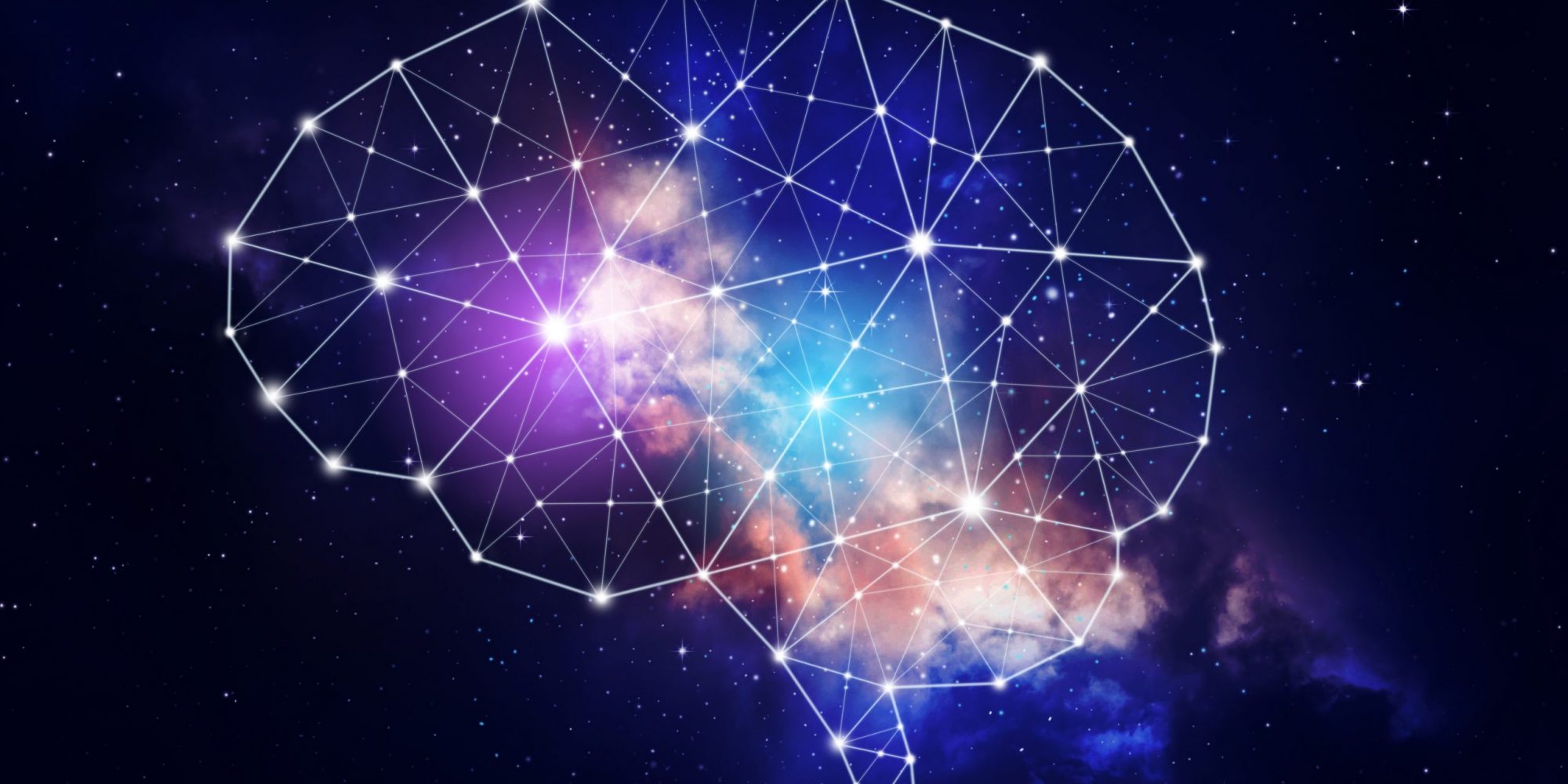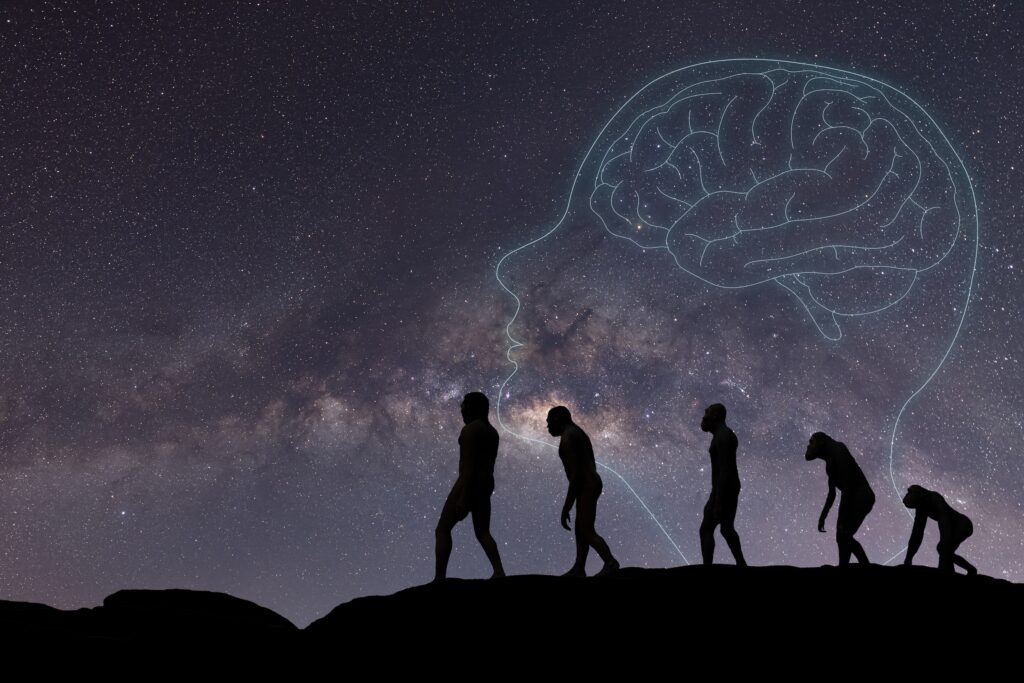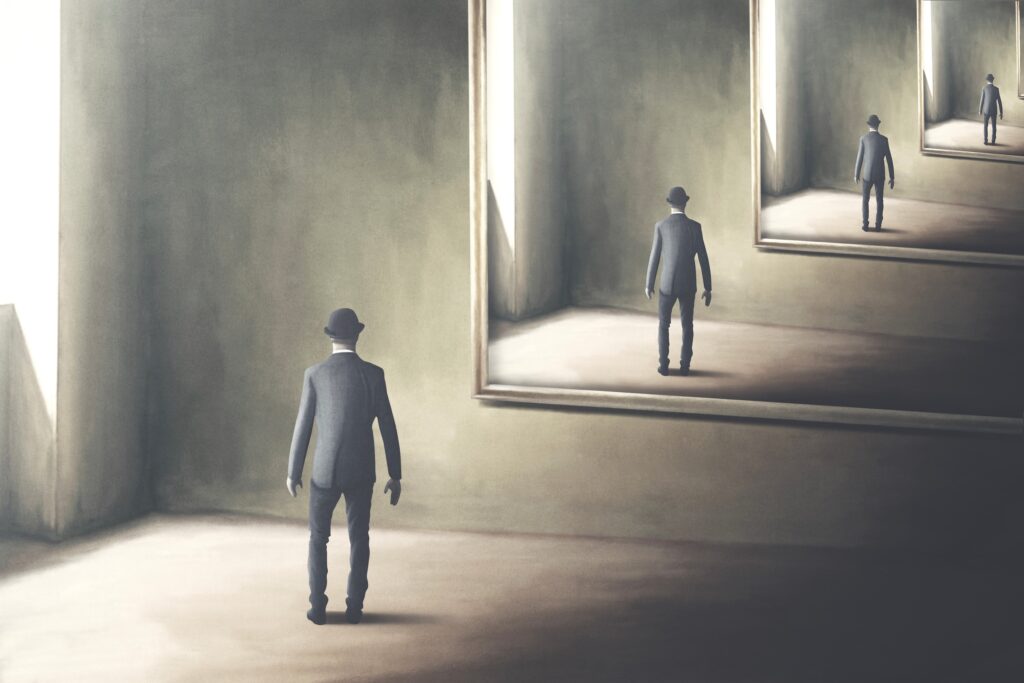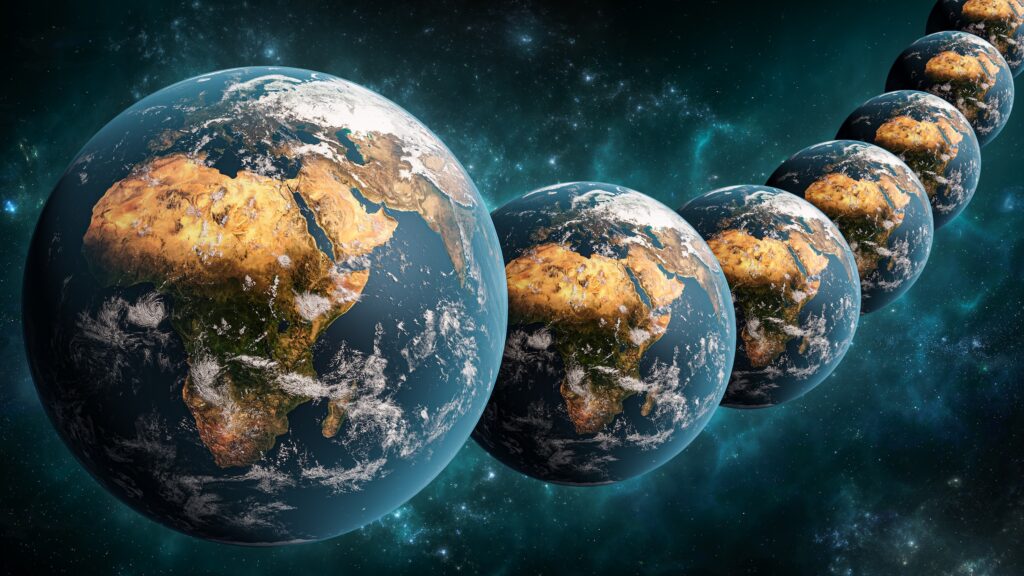Is the human brain a model of the universe?
Reading | Cosmology
![]() Melvin A. Felton | 2021-01-11
Melvin A. Felton | 2021-01-11

In this eye-popping essay, physicist and mathematician Melvin Felton explores the uncanny and unexpected similarities between the structure of the human brain and the universe at large, at both unfathomably small and unfathomably vast scales. Nothing in today’s science explains these bewildering similarities.
The size and dynamics of physical structures appearing throughout the universe varies across an enormous range of spatial and temporal scales. On the smallest scales, there are the elementary particles described by the Standard Model of Particle Physics. Then, on more intermediate scales, there are the objects that we perceive in our everyday world. Finally, on the largest scales, there are galaxies and even larger cosmic structures made out of galaxies. In addition, physical structures in the universe can also vary in terms of how complex they are. During the big bang, the universe began in a very simple state but then evolved such that, in localized regions—namely within galactic structures—it was possible for systems that are more and more complex to arise.7 The right ingredients and conditions existed on Earth so that it became a location within the universe where this increase in complexity was able to cross the threshold of life, and then eventually produce humans. Central to the human experience is the human brain, perhaps the most complex physical structure known. Today, scientists are beginning to find surprising similarities between the universe and the brain. Could the human brain actually be a model of the universe? In this brief article, I explore some reasons why such a hypothesis should be seriously considered. I also suggest a few ways to test this hypothesis. Finally, I consider some of its implications.
Documented evidence of structural and dynamical similarities between the universe and brain
Quantum theory says that, on a fundamental level, spacetime is not continuous; rather, it is discrete, consisting of individual units on the smallest possible spatiotemporal scales. Furthermore, all physical events can be considered to be some form of interaction between entities (such as elementary particles) at these discrete units of spacetime. Based on this formulation, the large-scale structure of spacetime in our universe can be viewed as a complex causal network where the discrete units of spacetime are nodes and the fundamental forces of nature are links between nodes. It has been shown that the network encoding the large-scale structure and dynamics of spacetime is in many ways similar to the large-scale structure and dynamics of other complex networks that have appeared in nature and society.13 The outermost part of the human brain, the neocortex, which is the region primarily responsible for our higher-order cognitive abilities, is one such complex network that has been identified as sharing structural and dynamical properties with the quantum-causal network model of spacetime. In addition, similarity between structure in the universe and the human brain has also been found on much larger spatiotemporal scales. Namely, similarity has recently been found between the complex network of galaxies constituting the cosmic web of matter and neuronal networks in the brain.23
Also note that string theory is believed by many to be one of the most promising candidates for the “theory of everything”, that is, a theory that unifies our two crown jewels of modern physics, quantum mechanics and relativity theory.10 Also, in a seemingly unrelated field of research, artificial neural networks have emerged as powerful tools for processing information. This technology is only loosely modeled after the human brain because its fundamental components are artificial neurons, simpler than real neurons, and the connectivity between them captures only some of what is observed in the brain.8 Nonetheless, it has recently been shown that, under certain conditions, the behavior of artificial neural networks undergoing training (learning) can approximate the features of quantum mechanics, general relativity, and ultimately, string theory.22 Also note that there is currently a trend to advance artificial neural networks by making them more ‘brain-like’ in terms of increased realism of the artificial neurons and the connectivity between them.12 It would be interesting to continue to track the existence of correspondences between artificial neural networks as they become more brain-like and the picture of the universe emerging out of physics.
Comparing the structural organization and dynamics of the universe and brain
How can we further investigate if there are structural and dynamical characteristics shared between the universe and the brain? This would not be a trivial endeavor, because in the field of physics there are many theoretical proposals that attempt to explain the fundamental nature of the universe. Likewise, there are many theoretical proposals in the field of neuroscience that attempt to explain the nature of the brain and mind. It may turn out that many theories that were once considered to be distinct from each other may in fact be equivalent, or at least complementary. On the other hand, some theories approach the same problem in fundamentally different ways and are diametrically opposed to each other.
There currently is no theory of everything that explains all fundamental physical processes in the universe. Likewise, there is no one all-encompassing, experimentally verified, or widely accepted theory of the brain or mind. One reasonable approach to evaluating similarity between the universe and brain would be to first survey the different proposals in the fields of physics and neuroscience, respectively. Then one could attempt to synthesize the compatible elements from accepted findings, as well as from the theoretical frameworks that have shown promise, to construct qualitative models of the universe and the brain, respectively, and then compare the two.
Because there is a wide range of viable theoretical proposals in physics and neuroscience, there are sure to be a wide variety of qualitative models that one could obtain to represent the universe and the brain. Each model constructed in this fashion should be considered as an attempt to represent just one particular view of the universe and brain that is emerging out of the fields of physics and neuroscience, respectively. If it turns out that, in fact, there are very similar views of the universe and the brain that are based on leading theories in physics and neuroscience, then it will be up to the scientific community to determine if it is just a coincidence or an indication that there is a deep connection between the structural organization and dynamics of the two systems.
What would be the significance if the human brain is a model of the universe?
If it turns out that the human brain and the universe have analogous structural organization and dynamics, then it means that the brain can be used as a model of the universe, and vice versa. Such a principle can provide physicists searching for a theory of everything with a model system to make observations on, opening up a whole new way to investigate and validate their theories, a luxury that many of our most recent theoretical endeavors severely lack. For example, recall that string theory is widely identified as one of the most promising frameworks for extending our understanding of the universe beyond the capabilities of relativity theory and quantum theory alone. However, string theory predicts entities—such as strings and the tiny curled-up extra dimensions that strings need to vibrate in—that have virtually no chance of ever being experimentally verified via conventional means, such as particle accelerators.4 Therefore, the ability to make observations on a physical system that has properties very similar to those possessed by the universe will allow string theorists to establish, via observational evidence, string theory’s relevance for describing the universe, an accomplishment that could potentially usher in a “third string theory revolution.”10
But note that if the human brain and the universe have analogous structural organization and dynamics, then ultimately the flow of information can occur in two directions. That is, it wouldn’t just be physicists who would benefit from being bestowed a model system upon which they could make observations; neuroscientists would also benefit because now a larger set of insights and concepts in theoretical physics can become an inspiration and a guide to their future research efforts. Currently, there are numerous collaborations between neuroscientists and physicists where the toolbox used by physicists to characterize physical systems has experienced great success when applied to the study of the brain.15 However, identifying a picture of the universe emerging out of physics as a viable model of the human brain would provide higher-level intuition and theoretical constraints for scientists who attempt to decode the ways of the brain.
How self-similar can the universe be?
If the human brain is a model of the universe, it would mean that the universe has self-similar qualities like a fractal and that we, or at least portions of our brains, are the miniature versions of it. Fractal phenomena like this are not at all uncommon. They can be found all throughout nature due to the prevalence of nonlinear dynamical processes.5 However, it should be noted that, if indeed the universe is fractal in this way, then based on the known properties of fractals the nature of any miniature copies would depend on the type of self-similarity supported by the universe.21 In other words, if the universe is like an idealized and infinite mathematical fractal, then in theory it is indeed possible for strict self-similarity—exact replicas—to exist on smaller spatiotemporal scales; but if the universe is a fractal that only supports approximate self-similarity, then it is only possible for an approximate replica system to exist inside it. It should also be pointed out that, given the current view of the universe emerging out of modern science, a fractal distribution of matter is just a subset of what it could mean for the universe to be self-similar. In other words, there are concepts being introduced by fields within physics, like string theory, that have a dramatic effect on what a miniature copy of the universe would actually look like.
As far as we know, the only ideal mathematical fractals that exist do so in our computer simulations. What we have seen in nature are fractal structures and processes that exhibit approximate self-similarity.21 In well-studied non-linear dynamical systems that exhibit self-similarity—like the Mandelbrot set and logistics map—what often exists is a multitude of substructures and processes that range anywhere from subtly similar to nearly exact copies of the larger system. However, in many cases, even though the miniature copies are not exact copies of the larger system, they are often similar enough that they can still be used as a model of the larger system. This may also be the case for the human brain in the event that the universe is self-similar and the human brain is a manifestation of this self-similarity. In other words, the similarity doesn’t have to necessarily be exact, but it could be so close that knowledge of the analogous structural organization and dynamics may prove to be a useful principle for advancing our understanding of both the universe and the brain.
The high likelihood that no two human brains can ever be exactly the same implies that what may be analogous to the universe is a general topological structure common to all human brains, yet still distinguishable from the rest of the animal kingdom. It may be possible to identify a human-specific topology through the use of algebraic topology, a mathematical discipline that is increasingly applied to the study of the brain on multiple spatial scales, revealing structures who’s features can be readily characterized using well-known topological concepts.16,17,18
Interestingly, these very same, or other very similar, analysis tools have also proven effective in our attempts to improve and extend our ability to describe the universe on the most fundamental of levels. Algebraic topology is currently being used to encode the probabilities of the various particle interactions allowed by the Standard Model of Particle Physics into an abstract topological object known as the “amplituhedron,” which can be characterized using the same topological concepts used to characterize network structures in the brain.1,24 Likewise, the mathematics of string theory is based on algebraic geometry, which means that the solutions to equations in string theory have geometrical interpretations with features similar to structures described by algebraic topology. The application of this type of topological analysis to both the brain and the universe makes it possible to more quantitatively compare both systems.
If there is a topological configuration that applies to both the human brain and the universe, how could such a condition arise? The answer may lie in the possibility that, over time, complexity in the universe has increased in localized regions, namely within galactic structures where there are stars that create complex atoms, planets that form from stellar remnants, and, at least here on earth, where life and human society has evolved.6 The result of the universe increasing in complexity like this during the course of its evolution could be that it has crossed the threshold for deterministic chaos and has begun to manifest various degrees of self-similarity. It has been suggested that the evolution of life on earth is a process that is more accurately described by deterministic chaos,3 which would make life a likely place for the universe to manifest its self-similarity. For example, it could be that, on earth, a more subtle form of the universe’s self-similarity manifests as non-primate mammalian brains, like those of dogs and cats. Then, a stricter form of the universe’s self-similarity could manifest as non-human primate brains, like those of macaques and chimpanzees. Ultimately, an even stricter form of the universe’s self-similarity could appear in the form of the human brain.
Self-similarity could ultimately provide an explanation for why the human brain evolved to have the form it has and function so successfully, because having the same (or even roughly the same) form as the universe as a whole would endow the human brain with the functionality required for creating abstract models of the universe.9 If the human brain is a physical model of the universe, then it could be a clear example of form defining function. Furthermore, a general principle may be that consciousness itself is a product of the universe’s ability to become self-similar, such as when evolution produces species of life on earth whose brains have structural and dynamical similarities to the universe as a whole. The stricter the similarity between a brain and the universe, the richer the conscious experience that would be possible within that brain.
Conclusion
More and more, modern science is uncovering surprising similarities between the universe and the human brain. Given the high demand for a system capable of modeling the universe, whether it be a mathematical computer simulation or a real physical system, these findings call for a systematic comparison of the ideas emerging out of physics concerning the fundamental nature of the universe, and the ideas emerging out of neuroscience concerning the fundamental nature of the brain and mind. Identifying analogous structural organization and dynamics of these two systems could lead to a powerful guiding principle for the advancement of our understanding of the universe, the human brain, and the relationship between the two.
Bibliography
- Ananthaswamy, A. 2017. “The New Shape of Reality.” New Scientist, July 29: 28-31.
- Ball, P. 2019. “Neuroscience Readies for a Showdown Over Consciousness Ideas.” Quanta Magazine, March 6.
- Bennett, K. 2010. “The Chaos Theory of Evolution.” New Scientist, October 13.
- Brooks, M. 2011. “The limits of knowledge: Things we’ll never understand.” New Scientist, May 4.
- Çambel, A B. 1992. Applied Chaos Theory: A Paradigm for Complexity. Academic Press.
- Chaisson, E.J. 2010. “Energy Rate Density as a Complexity Metric and Evolutionary Driver.” Complexity 27-40.
- Christian, D. 2008. Big History: The Big Band, Life on Earth, and the Rise of Humanity. Chantilly, VA: The Great Courses.
- Cole, KJ, and S Ahmad. 2019. “Biologically Driven Artificial Intelligence.” Computer, August: 72-75 (DOI: 10.1109/MC.2019.2917455).
- Conant, RC and Ashby, R. 1970. “Every Good Regulator of a System Must be a Model of that System.” International Journal of Systems Science 89-97.
- 2004. The Elegant Universe. Directed by NOVA. Performed by B. Greene.
- —. 2011. The Hidden Reality: Parallel Universes and the Deep Laws of the Cosmos. Vintage.
- Hassabis, D, D Kumaran, and C., Botvinick, M. Summerfield. 2017. “Neuroscience-Inspired Artificial Intelligence.” Neuron 245-258.
- Krioukov, Dimitri, Maksim Kitsak, Robert S Sinkovits, David Rideout, David Meyer, and Marián Boguñá. 2012. “Network Cosmology.” Scientific Reports.
- Montiel, M.E., A.S. Aguado, and and E. Zaluska. 1996. “Topology in Fractals.” Chaos, Solitons, and Fractals 1187-1207.
- Popkin, G. 2016. “Physicists, the Brain is Calling You.” APS News, April: 1-3.
- Reimann, M.W., M. Nolte, M. Scolamiero, K. Turner, R. Perin, G. Chindemi, and et. al. 2017. “Cliques of Neurons Bound into Cavities Provide a Missing Link between Structure and Function.” Frontiers in Computational Neuroscience.
- Sizemore, A., C. Giusti, A. Kahn, R.F. Betzel, and D.S. Bassett. 2018. “Cliques and Cavities in the Human Connectome.” J. Comp. Neurosci. 115-145.
- Sizemore, A.E., J.E. Phillips-Cremins, R. Ghrist, and D.S. Bassett. 2019. “The importance of the whole: Topological data analysis for the network neuroscientist.” Network Neuroscience 656-673.
- Song, C., S. Havlin, and H.A. and Makse. 2006. “Origins of fracticality in the growth of complex networks.” Nature Physics 275-281.
- Song, C., S. Havlin, and H.A. and Makse. 2005. “Self-similarity of complex networks.” Nature 392-395.
- Strogatz, S. 2008. Chaos (The Great Courses, course and guidebook). The Teaching Company.
- Vanchurin, V. 2020. “The World as a Neural Network.” Entropy doi:10.3390/e22111210.
- Vazza, F, and A Feletti. 2020. “The Quantitative Comparison Between the Neuronal Network and the Cosmic Web.” Frontiers in Physics doi: 10.3389/fphy.2020.525731.
- Wolchover, N. 2013. “A Jewel at the Heart of Quantum Physics.” Quanta Magazine, September 17.

Essentia Foundation communicates, in an accessible but rigorous manner, the latest results in science and philosophy that point to the mental nature of reality. We are committed to strict, academic-level curation of the material we publish.
Recently published
Reading
Essays
Seeing
Videos
Let us build the future of our culture together
Essentia Foundation is a registered non-profit committed to making its content as accessible as possible. Therefore, we depend on contributions from people like you to continue to do our work. There are many ways to contribute.















